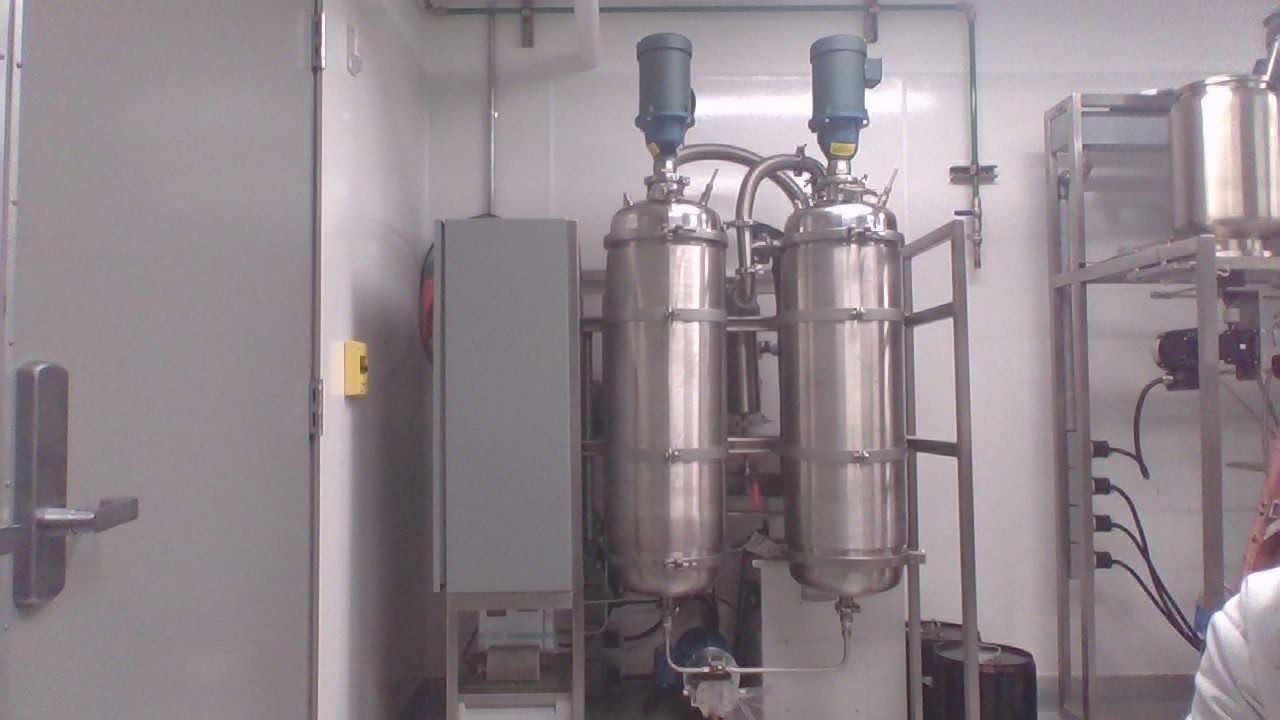Hey I’ll drop you a few tips to try testing with, and please anyone let me know where you might tweak this.
Your decarb issue sounds like the major reason for a poor first pass and vac level issues, but adding a second cold trap between the element and your vacuum will greatly improve your vac stability. I run a KDT 6 and I added a typical $500 Dry ice & isopropyl cold trap in between the vac sensor and the vac pump. Avoid adding too much extra hosing tho, as this will decrease your overall vac level.
Your first pass Evap temp is too hot in my opinion. Unless you have a fair amount of pre-distillation processing, which it doesn’t sound like you have, then you are working with a complete Full Spectrum crude which has ALOT of volatiles between 90 - 150C. Without a relatively long, hot decarb you are releasing all of those compounds at once under the intensity of high vacuum. I would recommend a 130 - 145C Evap temp for Terp stripping. Do this with a slow feed rate and you will strip off almost everything that is “light” enough to pass a cold trap and enter your vacuum. The condenser under these conditions can be as low as you like.
Your second pass should be the hottest, not your third. The way I distill in 3 stages is ~140C to evaporate off the light stuff from your crude; then ~180C to evaporate off the desirables from the heavy undesirables (waxes and such); then ~155 - 175C to isolate the desired compound or range.
The darks and the reds your getting are either the Heavy compounds that your accidentally including by evaporating at high temperatures and collecting; OR your temp is so hot and your vacuum is so deep that you’re burning some of your desired compounds. 8e-4 vacuum will lower your desirable boiling points to below 180C.
A trick to distillation, that proves absolutely necessary with the KDT units in my opinion, is a hot condenser. On the first pass the condenser should basically act as a preliminary cold trap, 0C is great. But on the second pass it should be hot, as in 100 - 120C. I only have a single stage so anything that passes the condenser goes either to my cold trap or out of my vacuum exhaust in the form of the foulest smelling essence known to our lab community. That being said, with a condenser in this temp range I have little to no material collecting or any foul smell; so all that is being evaporated is being condensed and collected. The third pass should be hotter than the second. This is how you properly isolate your desired compound. With your vacuum depth being 8e-4, you will collect the purest product somewhere between 130 - 160C on the condenser. Exactly where in that range comes from practice, close observation and good math; not to mention it will vary about +/-5C with oil quality and how well you performed stage 1 & 2, but reading a vacuum gauge intelligently will tell you everything you need to know about what’s happening in the internal reaction.
Keep your feed tank at 125 - 130C consistently. As long as the oil residence time in the feed isn’t several hours, this will aid you with your decarb problem. I’m not suggesting using the feed to decarb. I do a quick decarb on a hot plate, just like the above members have mentioned, up to ~115C until MOST bubbles settle. The high speed of my stir bar is the secret to making the decarb quick. I then load the feed with this already hot oil and watch as new little bubbles begin to rise. For another reason, that’s too much of a tangent, I don’t fully decarb like tradition says. Hint: CBDA doesn’t crystalize. Back to the point; a hot Feed tank will already start to separate “lights” from “heavys” which will aid with your terp stripping. Hot oil also flows better and isn’t subject to temperature “shock” which can create azeotropes that are harder to separate/isolate.
Using a Maratek C100 properly should 90%+ solvent so as long as you are confident in the way you’re running the parameters. So don’t think in terms of solvents as the issue when doing distillation with hot temperatures, they don’t want anything to do with your heat.
The problem is a chemistry one; dealing with solids that want to be solids but your evaporating them. Terpenes are a nasty beast when heated, they can stick to everything and solidify & collect where you don’t want them, ever. Think in terms of tracking your vapors. Consider how temperature ranges/differences will propel or attract compounds. I figured out distillation parameters by getting super high off edibles and meditating in front of my machine while it was running; I DON’T suggest this kind of behavior! I imagined myself as a certain compound (knowing it’s characteristics like B.P., polarity, molecule size, etc.) and thought of what I would do if it was me. For example, if I’m in a fucking furnace haha I’d probably get to the coldest thing near me asap; OR I might find a larger, tougher molecule to protect me. If you have a basic understanding of chemistry and take the time to get to know what exactly is in Full Spectrum Crude, then this can be a very fun experimental tool to use.
I hope this is useful to you and the rest of the Future community. Disclaimer: I am no expert, I’m only a humble 24, but I love making medicine!
